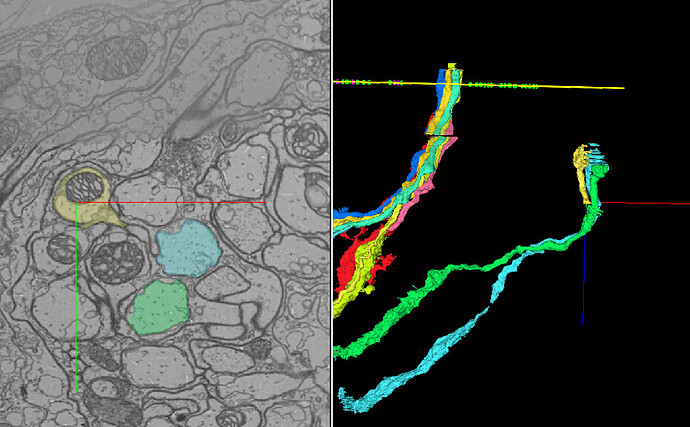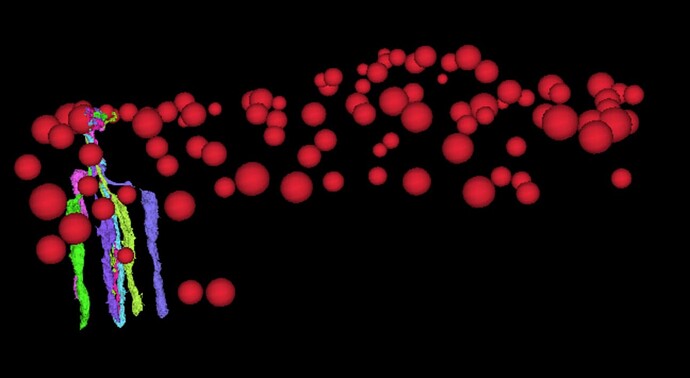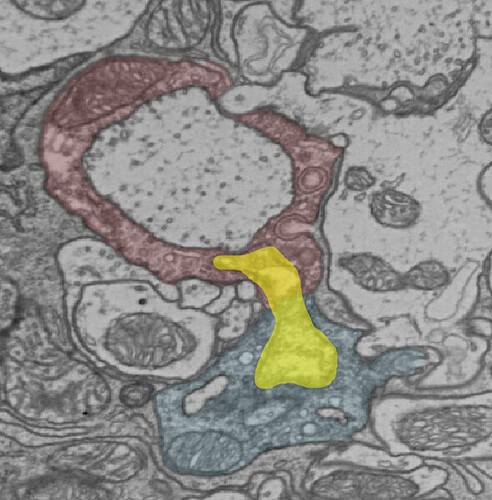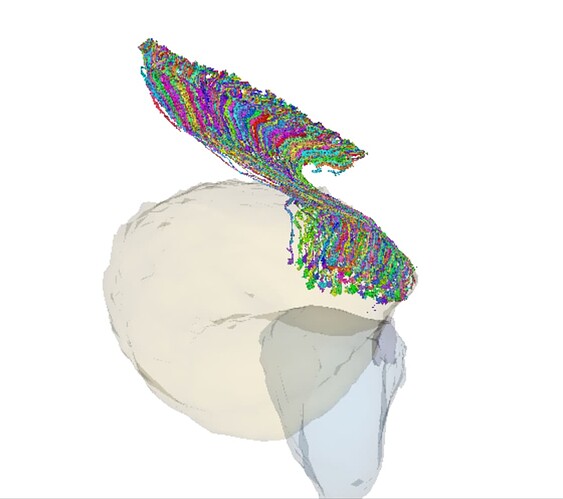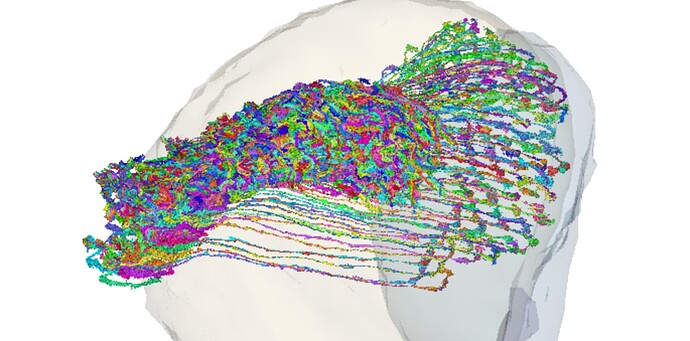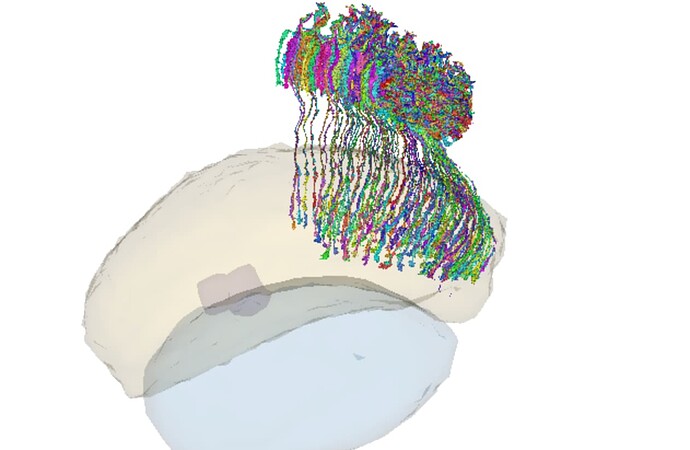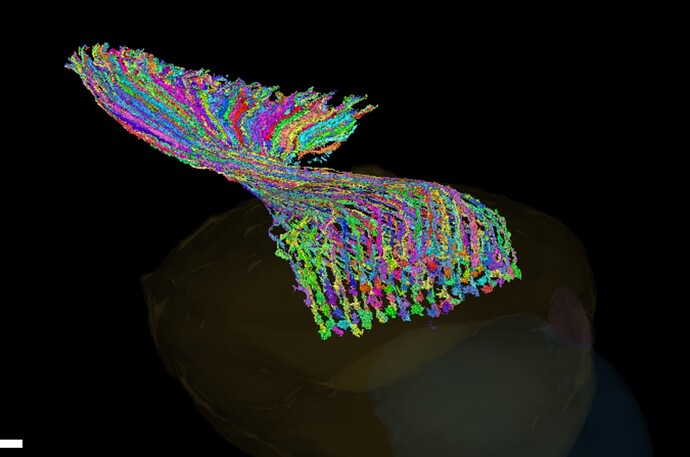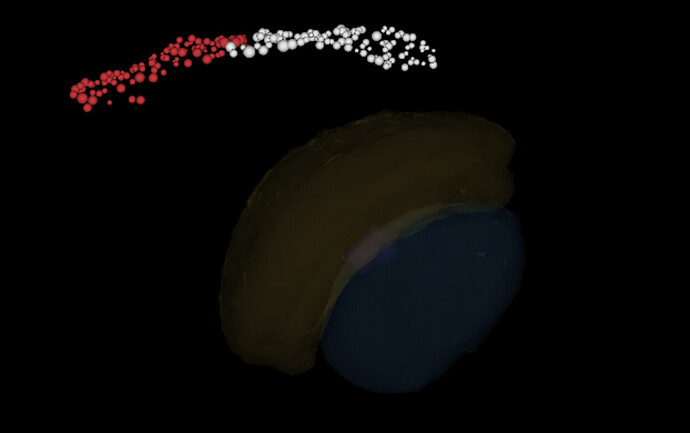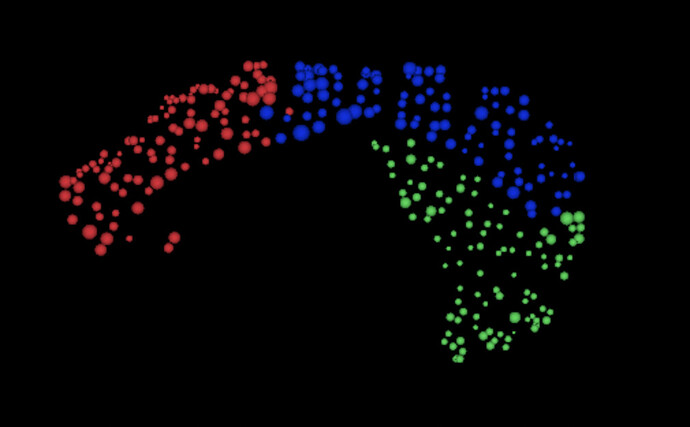Seung lab member Szi-chieh put together a very helpful guide for a method for finding photoreceptors, which I published to the blog - How to find photoreceptors to proofread and label - FlyWire Blog
How strict to the zones should we remain for this? Not just in terms of inter-zone overlap, but also for areas not covered by a zone at all (if there are any). As a bad example:
I’m assuming these low ones should still count as part of my zone (obv will still id them even if not), but much further to the right and it exits the search area completely. If there are any out there, are they considered lower priority atm, or equal prio and the zone just doesnt cover them because its a curve?
I guess ultimately my question is: should i only care about cells directly within the bounding box, or should the zone invisibly extend in z (and x also?) direction too?
Hi stock53y,
As you said, it’s a case of the areas are all “equal prio and the zone just doesn’t cover them because its a curve”. So we’re approaching the quest to map the photoreceptors from two sides, (1) trying to map all the cells within a zone and (2) by searching for each column via the Mi1 and L1 cells. There are some tracers working in zones in the Z direction in a layer below the current Flyer zones and there are some doing the second Mi1/L1 method.
It’s okay if you want to stick to only mapping the photoreceptors in that one area/level as outlined by the bounding box - or - if you keep finding neighbor photoreceptor friends and go a bit beyond the lines, that’s totally cool too! If you’ve seen me on Twitch, I tend towards the latter and go out of bounds here and there (I get easily distracted with finding friend cells ![]() )
)
Overall, I’d say for our goals as a group as a whole it’s best to prioritize getting everything within the Zone first, so we can keep track of progress and know that we have covered that area. Beyond that, feel free to fly around!
My first 100 complete clusters of identified photoreseptors with a total of 800 cells. Each cluster is numbered with a corresponding group of id´s in this sheet cell farms - Google Sheets
FlyWire
Have found every L1 that passes below zone 13, estimating around 50 or so (they curve too much for a count to be too accurate ![]() ). A fair bit of overlap occurs with zone 12, so who knows ¯\_(ツ)_/¯
). A fair bit of overlap occurs with zone 12, so who knows ¯\_(ツ)_/¯
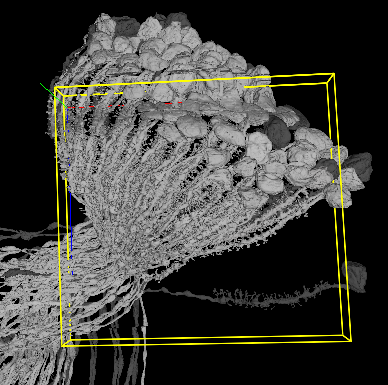
Most of these ones dont pass through the official zone boundaries, but i expect the ratio that do will be quite a bit higher for the “inner” zones
Found an interesting R1-6 interaction, thought I’d share and maybe get some scientist feedback?
While I’m used to seeing R1-6s ‘interlock’ with each other, this particular junction looks like fusion in the 2D section. There’s more than just a passing portion of the cell from one to the other: the edges genuinely seem to conjoin for a few 2D slides afterward.
Link (this is before I finished editing either cell): FlyWire
Here you can see the passing of cell matter between the two cells (highlighted yellow)
Here you can see that the cell barriers do seem to conjoin as they pass this material:
It could just be some rough borders, given the area, but I’ve never quite seen an interchange like this one - usually there is a very clear delineation between the ‘interlocking’ parts (such as we see with this neighbor):
Anyway, feel free to tell me, “AJ, you’re thinking about this too hard” but I felt it was worth a share. ![]()
Very cool! I think it is most likely that the barrier broke down or got overstained here. Especially since the interlocking projection ends in the lower blue neuron.
While most eye cartridges contain 6 R1-6 cells with an R7 and an R8, we’ve learned that there are a couple of regions/areas where there may be some differences.
The R cell number varies slightly in two locations:
- Equator
- Edge
This is due to neural superposition during eye development. At the equator, there are 4 rows of cartridges with 7 or 8 R1-6. At the edges they can have less, sometimes also without R7/8.
I feel confident enough to declare sector 4 complete!
I changed my approach midway through this sector and moved to identifying photoreceptors by cluster (L1+R1-8) and found it a lot easier to follow in this sector. Also noticing a few distinct shape patterns in R1-6 that may help in further narrowing these types down, though I haven’t taken any deep dive into those patterns.
Sheet is updated and here’s a handy link here: FlyWire
(Going to take a small break out of these sectors to go back over my right lobe T4-T5 cells/cell farms but from here on out I am going to try to alternate work on that and photoreceptors since there’s many to go!)
Huzzah! ![]()
![]()
![]()
![]()
![]()
![]()
Congrats on finishing Sector 4 @AzureJay! I’m glad you found the L1+R1-8 method a little easier. I also prefer to use the L1 cell as a major touchstone for finding certain cell types in a cluster/ommatidium.
PS. Let us know if you have any questions about your T4 or T5 cells – happy to help ![]()
Bravo, that’s wonderful!
another 100 clusters of retinal cells from the right lobe done, this time in the area not affected by the rift, with my 200 clusters i have a band that goes almost from one end of the lobe to the other.
all id`s in each cluster can be found here cell farms - Google Sheets
and annotation points here FlyWire
As part of a joint effort from Flyers, Princeton lab members and researchers, the Photoreceptor Zone Quest has been completed!
Together, we proofread a total of 5k+ retinula cells in the right optic lobe using a variety of mapping processes (ie. spatial zones, common synaptic partners) to ensure full coverage. Thank you for your contribution and efforts to this Quest. We are now casting a wider net and focusing on tagging cells in the visual system. Happy Flying!
PS. If you’d like to attempt loading all 5k+ photoreceptors, here’s the link: neuroglancer (warning: this link takes really long time to see loading, be patient ![]() )
)
Thanks so much everyone. For science!
after looking at the Dm8 cells classified by kk in the cell farms there is a lot of cells not marked as identified and i guess this might be the case in the other cell farms also. i am thinking the fastest way to get many cells is too look at the cells farm and identify the cells that did not get identified the first round
we should probably also have a system so not everyone is working on tagging the same type
As for the Dm8, I wasn’t 100% sure about all the identifications, so I didn’t label them (hence the purple field in the “Status” column). If the field is green, that means, that I (or someone else) have already labeled (almost) all cells.
ah okay, i am seeing it now, did have very little time too look at it this morning so forgot too look at the colour in the sheet.
i was just wondering on the difference betwheen the tagging dashboard and cell farms on a few but a big part of the explanation could be there then.
